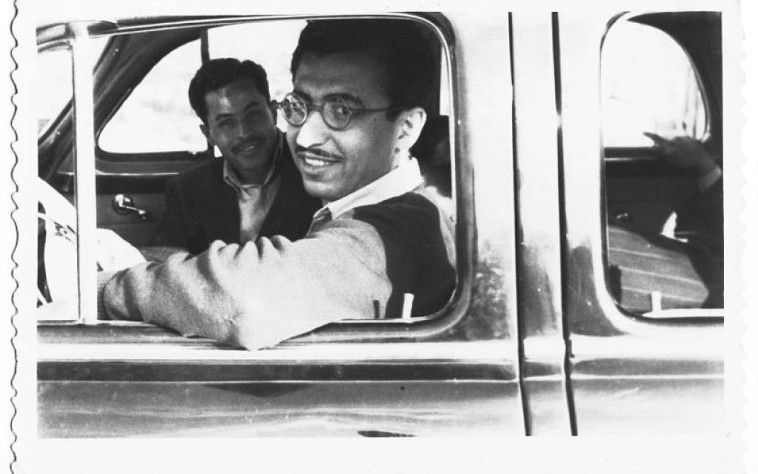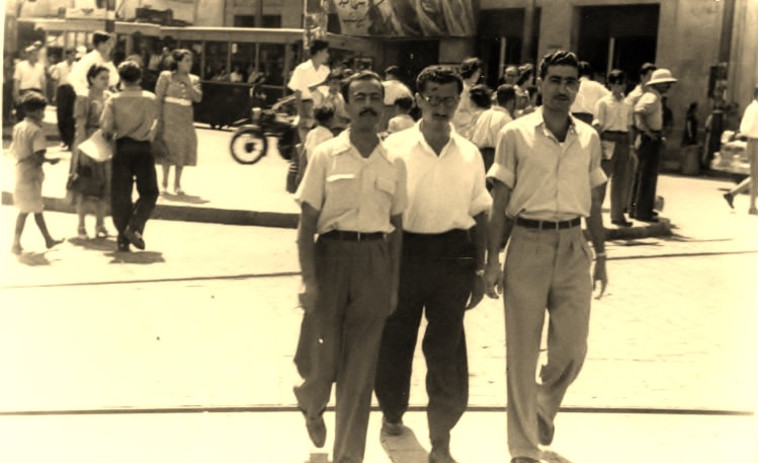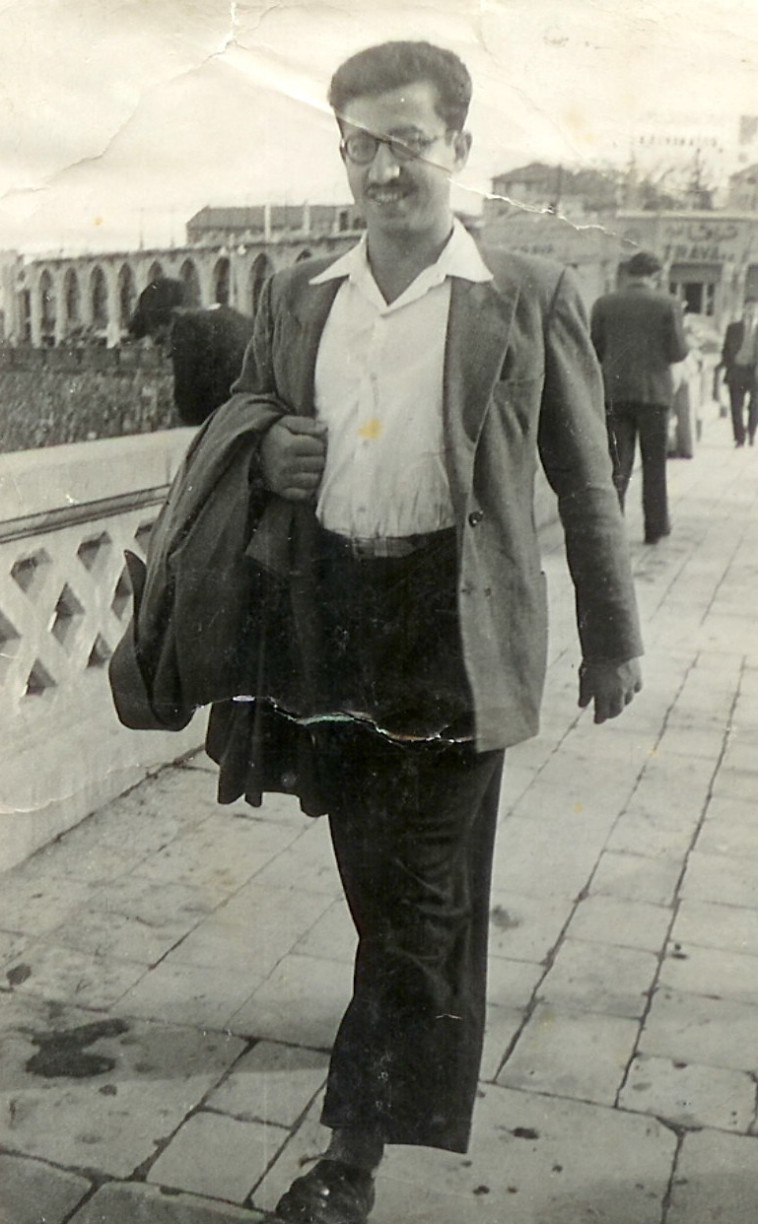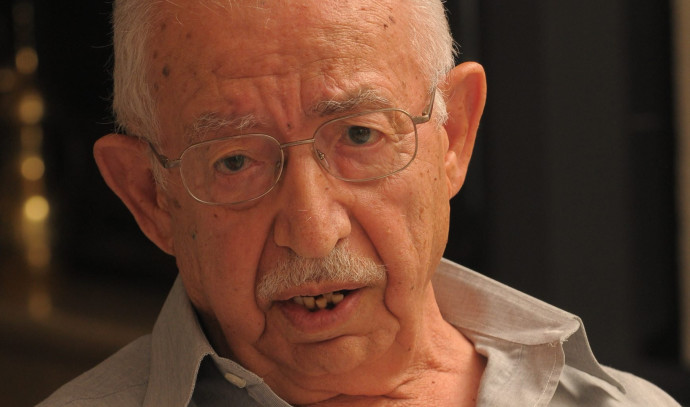The intelligence and intelligence man, Yitzhak Shoshan (“Abu Sahik”), who was one of the first members of the Arab Department in the Palmach, underwent spying and was one of the founders of the General Staff patrol and the leader of the Jewish smuggling operation from Syria in the 1970s, died today (Monday) at the age of 96.
Shushan was born in 1924 in Aleppo, Syria and immigrated to Israel in 1942 when he was 18, but when he heard his friends speak Arabic, he was returned to Syria by the British Mandate authorities and forced to immigrate to Israel once more, which he succeeded. In 1943 he joined the training of young Syrian immigrants in Kibbutz Naan and in 1945 joined the training of natives in Kibbutz Gvat. During that year he enlisted in the Palmach and served in the “Dawn” department, the Arab department, as an undercover officer.
In those days as an undercover detective, Yitzhak was nicknamed “Abu Sahik” and took part in missions collecting intelligence missions on intelligence targets such as gang leaders and arms smugglers.
 Yitzhak Shoshan in his days in the Palmach (Photo: Courtesy of the Palmach Photo Treasure)
Yitzhak Shoshan in his days in the Palmach (Photo: Courtesy of the Palmach Photo Treasure)In 1948, Haganah activists staged an arrest, in which Yitzhak, dressed as an Arab, was taken to a detention camp where gang activists and Arab fighters were staying. From there, Yitzhak set out with a convoy of refugees to Lebanon in order to establish an intelligence base in Beirut, and then worked for about two years in Lebanon, Syria and Jordan, where he took part in establishing and establishing infrastructure for Israel’s intelligence service in Arab countries.
His name in Beirut was Abdul Karim Muhammad Sidki. To cover their activities, Yitzhak Shoshan and his friends Gamliel Cohen, Habakkuk Cohen, Yaakova Cohen and Shaul Carmeli opened a small kiosk in Beirut, and with the money sent from the Palmach headquarters, they purchased a taxi, in which passengers traveled on the Beirut-Damascus-Amman line.
 Yitzhak Shoshan and Habakkuk Cohen in the Oldsmobile taxi in Beirut, 1949 (Photo: IDF Spokesman)
Yitzhak Shoshan and Habakkuk Cohen in the Oldsmobile taxi in Beirut, 1949 (Photo: IDF Spokesman)From Beirut, Shushan and his friends passed on valuable radio material on radio and participated in many covert operations. One of the most famous of these, Operation David, was the yacht ring “Igris”, which was purchased by a Lebanese businessman and docked on the north coast of Beirut. This, following information received at the Palmach headquarters about an intention to arm the yacht with cannons and shell the port of Haifa overboard.
He also collected information ahead of the explosion of oil reserves in the Lebanese port of Tripoli (an operation that did not materialize), and collected data on other operatives in the Arab department who disappeared.
 Yitzhak Shoshan in Beirut (Photo: IDF Spokesman)
Yitzhak Shoshan in Beirut (Photo: IDF Spokesman)In 1950, Yitzhak returned to Israel, and until 1966 he served as an officer in the regular service of the IDF Intelligence Corps’ special role community, operating agents beyond enemy lines, setting up Riddle 269, later the General Staff Reconnaissance Squadron, alongside Avraham Arnan, serving in the training and operation of fighters In Arab countries and more.
 Yitzhak Shoshan (Photo: Reuven Castro, Reproduction)
Yitzhak Shoshan (Photo: Reuven Castro, Reproduction)In 1966, he was loaned by the IDF to an “institution”, where he served, until his retirement in 1982, in operational, command and managerial positions, most of which are still in decline. Among other positions at the institution, he trained the spy Eli Cohen. It headed the special department for rescuing Jews from distressed countries and bringing them to Israel.
From the time he retired until the year 2000, he continued to volunteer at the institution and taught voluntarily in various security settings. He was also invited to lecture and share the experiences of his undercover friends with schoolchildren, members of kibbutzim and other settings.
 Yitzhak Shoshan in Beirut between 1948 and 1950 (Photo: IDF Spokesman)
Yitzhak Shoshan in Beirut between 1948 and 1950 (Photo: IDF Spokesman)Operation Cement – Bringing 750 Jews from Syria
About two years after the Six Day War, young Jews from Syria began looking for ways to immigrate to Israel. Some escaped secretly from Aleppo and Damascus and infiltrated Beirut, where they concentrated in the homes of the Jewish community. There was a fear that the Lebanese would discover them, and the Mossad began to examine ways to rescue them from there and bring them to Israel.
Yitzhak Shoshan, who then served as head of the special department for bringing Jews from distressed countries, came up with an interesting and daring idea: illegal immigration by sea. The idea was surprising and questionable, but Shushan was determined and drew lines for an action plan, which was based on his experience as an undercover detective in Beirut about 20 years earlier.
Shoshan, who during his years as an undercover detective served, among other things, as a taxi driver in Beirut, got to know the city and its shores. “I knew that if I found a man who owned a motorboat in Beirut, and who could sail the young people a certain distance from the shore – I solved the problem,” he later said, “because from there navy vessels could pick them up and bring them to land.”
As part of his work at the Mossad, Shoshan has secret contacts with various intelligence agencies. Among them was a senior clergyman, a Christian Arab from East Jerusalem, who used to cross the border of Jordan, Syria and Lebanon freely. Shoshan asked him to locate in Lebanon a trusted person who owns a motorboat or the ability to operate such a boat. Fate wished and the priest had a childhood friend, a journalist at a Lebanese newspaper, who owned a fishing boat, in which he used to go out to sea with his family on Sundays.
The priest managed to bring the journalist to Israel and the chemistry with Shoshan was immediate. There was still a need to prepare the man for the operation, and Shoshan organized an intensive 5-day “training” for him in the navy. Only when he was ready was the journalist told what part they had in the program and he was equipped with a walkie-talkie and codes appropriate for communication with Shoshan. This is how Operation “Melt” (from the language of escape) was launched.
In the press operation he went out to pick up the people at an agreed meeting point and drove them to a certain point on the beach. When the code was received at the “institution” from Europe, that the people had set out, the “bee” of the navy came out to meet them from the land. The navy made hundreds of raids on the collection shore near Beirut. Mostly in “Devor” ships, and once in the STIL. In the operation, which lasted between 1969 and 1973, 750 Syrian Jews were brought to Israel by sea: initially a handful of boys and girls on each voyage and later entire families, including soft-spoken children.
In the following years, attempts to escape Jews from Syria to Lebanon continued, but after Palestinian Fatah members took control of the coastal strip in Beirut, the Mossad had to find alternative solutions for bringing Syrian Jews by sea. In 1975, 100 Syrian Jews arrived in Israel on a flight, in direct cooperation initiated by Shushan with elements in the Lebanese army, and when this channel was also blocked, Shushan and his men found a new route through Turkey. In the following years, the rescue efforts of Syrian Jews continued, and as a result of these actions, which later also included American involvement, no Jews remained in Syria at all.
